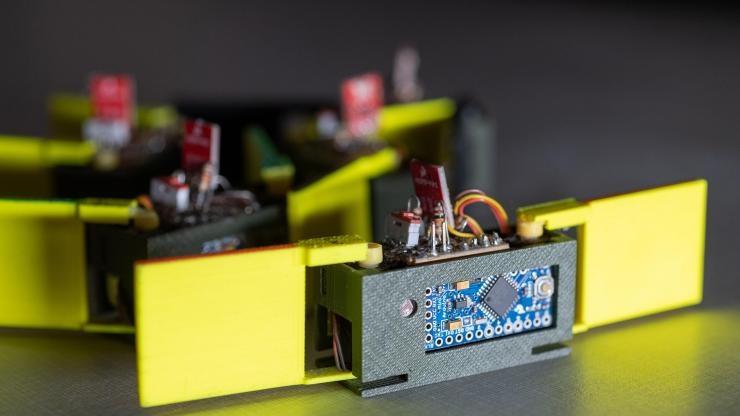Artificial Intelligence is a new question among science researchers. Let us scroll through the hottest news of the September on Artificial Intelligence.
Tuna gets robotic
Researchers have spent a five-year, $7.2 million Multi-disciplinary University Research Initiative to study the swimming mechanism of fishes. Since robots underwater are helpful in defense, marine source exploration, infrastructure inspection, and recreation. The bio-inspired propeller is an eyeless, finless 10 inches long replica of tuna fish. It allows researchers to study the biological swimming mechanism with the relationship of speed to tail-beat frequency and energy.
Dark matter face recognition
Dark matter is a dark mystery in itself. Scientists following on the facebook face recognition system used similar detection algorithms to study the dark matter. Since dark matter bend light waves away pulling it backward and drawing mass map we can locate where dark matter is. The results are astonishing.
El Nino no more a threat
As warm waters in the tropical Pacific Ocean shift eastward and trade winds weaken, the weather pattern collapse through the atmosphere. It causes drought in southern Africa, wildfires in South America, and flooding on North America’s Pacific coast. Climate scientists using AL neural networks can predict up to 18 months in advance about El Nino than the previous 1 year. Different historical and simulated climate models are fed into the neural networks to predict the temperature and climate conditions in advance.
Small robots control big robots
The scientists have improved technology by artificial intelligence and avoided the use of batteries, actuators, motors, etc and created smart active particles called “smarticles”. The 3D printed particle can move their hands. If 5 smarticles are arranged they confine into a robotic system called “super-smarticles” which can move on their own. Light and sound sensors can allow stimulus movement. Thus by controlling a system by a small group can result in the locomotion and allow control mechanism that can potentially change shapes.
Automation of synthetic molecules
As everything is getting automatic, scientists are looking forward to easing their task as well by automating synthetic molecule productions. Since the diversity of reactions limit the robotic capability to use scientist have created a fully automated peptide synthesis and purification that can allow large scale production of peptide for drug production which was earlier resisted by mechanical lengthy processes.
Link to similar posts: https://scientiamag.org/the-historic-mission-of-india-to-the-moon-ended-up/

Rida Nayyab is a young activist and a Cricket freak. She is a Student of Bio-Chemistry and striving for a better future. Rida is also a freelance writer, social enthusiast, and love to reading, writing and exploring. She is head of the social media team of Scientia magazine.

